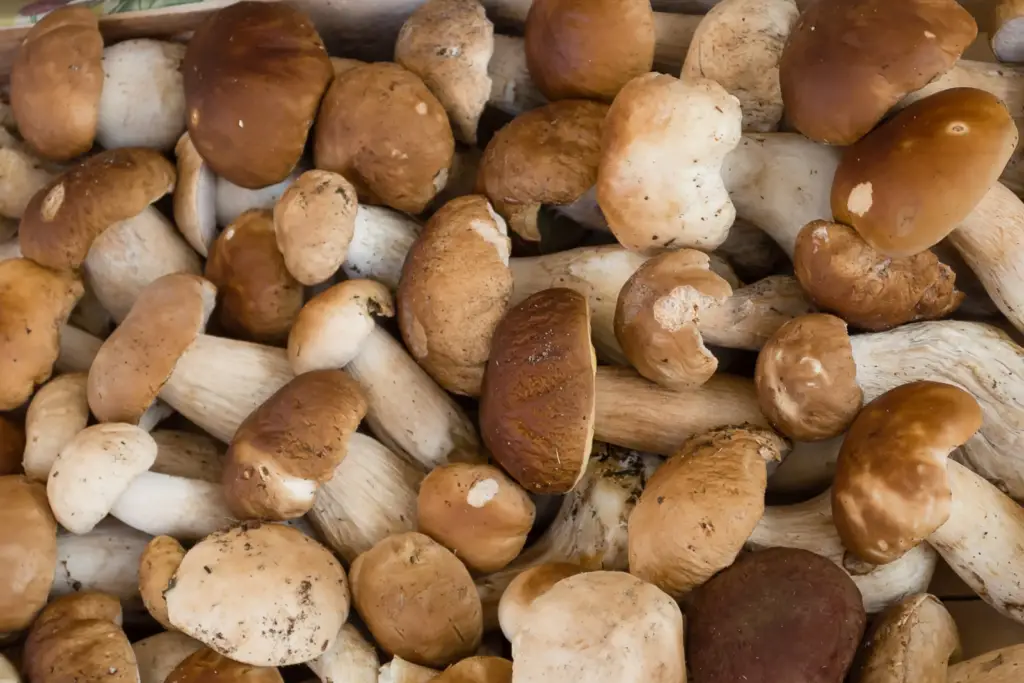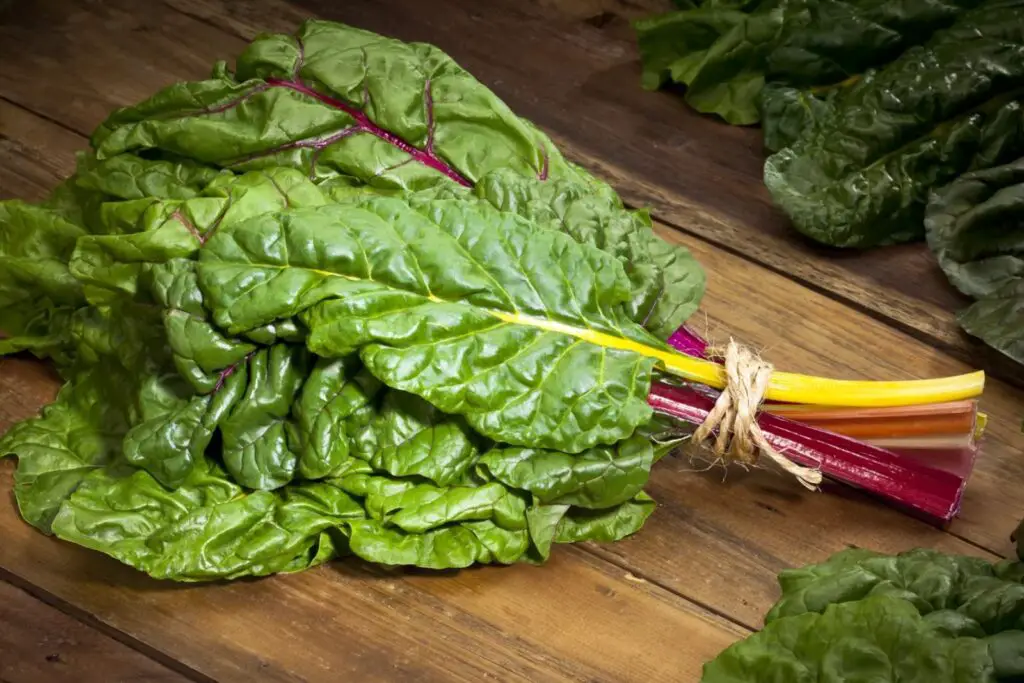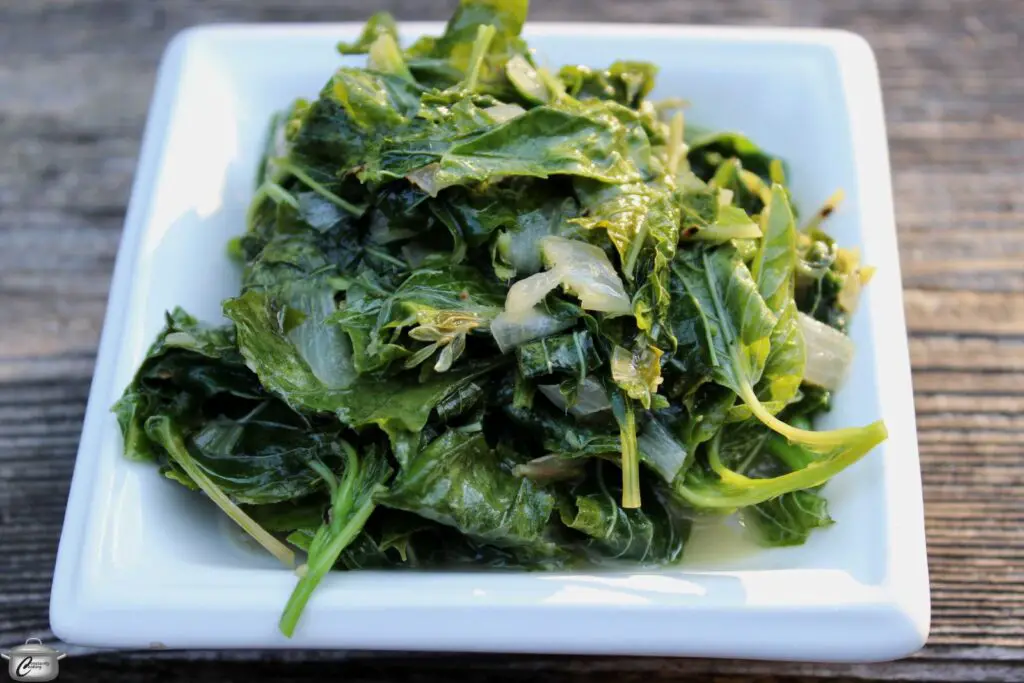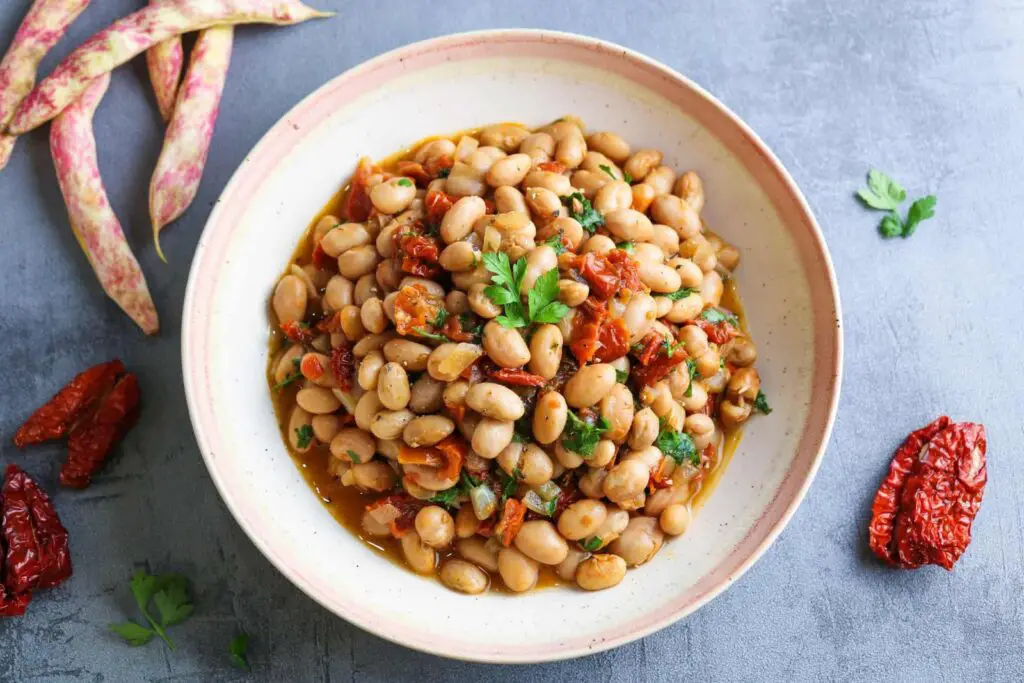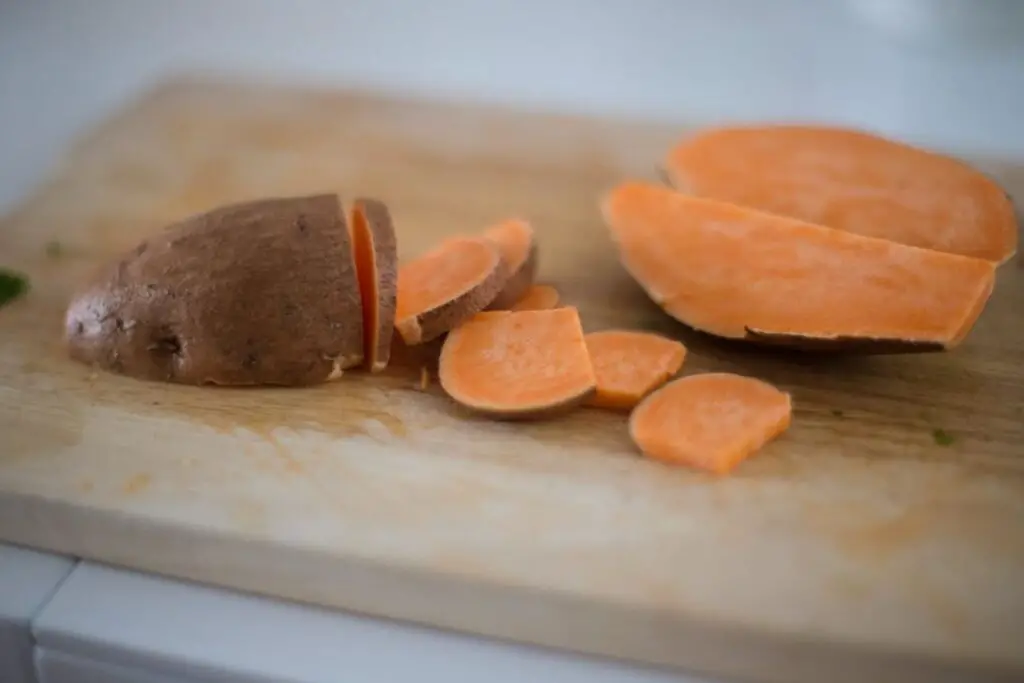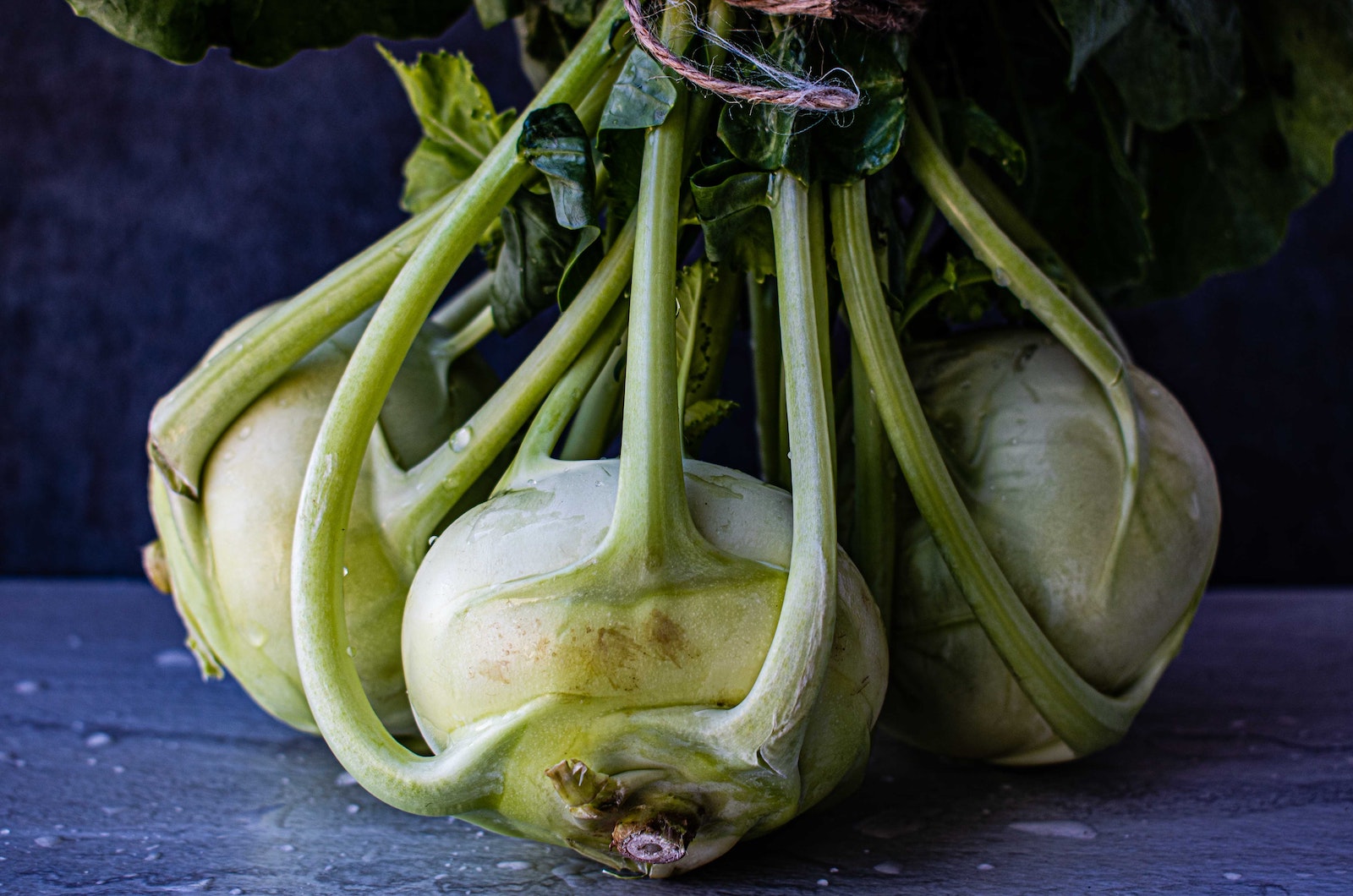
Kohlrabi is a nutritious and versatile vegetable that can be enjoyed in many dishes. However, it’s not always easy to use up the whole kohlrabi before it goes bad. Freezing is a great way to preserve kohlrabi for later use, allowing you to enjoy its benefits throughout the year. Freezing kohlrabi is a simple process that requires minimal preparation and equipment. In this guide, we will go through the steps to freeze kohlrabi, ensuring that it maintains its flavor and texture once thawed. Whether you are looking to save some kohlrabi for a future recipe or have a bumper crop that you want to preserve, freezing is an excellent option. So, let’s get started and learn how to freeze kohlrabi.
Here’s how you can freeze Kohlrabi:
Step 1: Choose fresh, firm kohlrabi
How to recognize fresh kohlrabi?
Here are a few things to look for when trying to recognize fresh kohlrabi:
- Firmness: Fresh kohlrabi should feel firm to the touch. When you press your fingers against the skin, it should be resilient and not feel spongy or soft.
- Weight: Fresh kohlrabi should feel heavy for its size. This indicates that it has retained moisture and is not dried out.
- Skin: The skin of fresh kohlrabi should be smooth and free from blemishes or bruises. Any discoloration or soft spots may indicate that the kohlrabi is not fresh.
- Size: Look for kohlrabi that is small to medium in size, as larger kohlrabi can be tough and fibrous.
- Leaves: If the kohlrabi comes with leaves attached, they should be bright green and crisp. Wilted or yellowing leaves can be a sign that the kohlrabi is not fresh.
By checking for these signs, you can ensure that you are selecting fresh and high-quality kohlrabi.
Step 2: Clean and cut
Here are the steps to clean and cut kohlrabi before freezing:
- Wash the kohlrabi under running water to remove any dirt or debris.
- Use a sharp knife to trim off the stems and leaves, if any, and discard them.
- Use a vegetable peeler or a sharp knife to peel off the tough outer skin of the kohlrabi.
- Cut the kohlrabi into small, even-sized pieces. You can slice it into rounds, chop it into cubes, or julienne it into thin strips, depending on your preference.
What part of kohlrabi do you not eat?
When it comes to kohlrabi, there are a few parts that are not typically eaten:
The stem: The stem of kohlrabi is usually tough and fibrous, which makes it difficult to eat. However, some people do use the stem in recipes such as soups, stews, or smoothies. If you decide to use the stem, it is important to remove the tough outer layer and chop it into small pieces before cooking or blending.
The leaves: The leaves of kohlrabi are also edible, but they can be tough and bitter. If you want to use the leaves, it is best to remove the tough stem and cook them before adding them to dishes. The leaves can be used in a variety of recipes, including salads, soups, and stir-fries.
The tough outer layer: Kohlrabi has a thick, fibrous outer layer that is not typically eaten. This layer can be difficult to peel, so it is important to use a sharp knife or vegetable peeler to remove it. Once the tough outer layer has been removed, the tender and flavorful inner flesh can be used in a variety of recipes.
In summary, while the stem and leaves of kohlrabi are technically edible, they are often tough and bitter, so they are not commonly consumed. The bulbous part of the kohlrabi, once the tough outer layer has been removed, is the most commonly used and consumed part in recipes.
Step 3: Blanch your kohlrabi
Why blanch kohlrabi before freezing?
Blanching kohlrabi before freezing is an important step in the freezing process.
Here are the reasons why blanching is important:
Preserves Color: Blanching helps to preserve the bright green color of the kohlrabi by deactivating the enzymes that cause discoloration.
Prevents Loss of Nutrients: Blanching also helps to preserve the nutrient content of the kohlrabi by preventing the loss of vitamins and minerals during freezing.
Reduces Bacteria: Blanching reduces the number of bacteria on the surface of the kohlrabi, which can help to prevent spoilage during storage.
Softens Texture: Blanching also softens the texture of the kohlrabi slightly, which makes it easier to peel and cut.
Overall, blanching kohlrabi before freezing is an important step that helps to preserve the quality, color, and nutrient content of the vegetable.
How to blanch kohlrabi?
Blanching kohlrabi is a simple process that helps to soften it slightly, improve its texture, and make it easier to peel. Here are the steps to blanch kohlrabi:
- Bring a large pot of salted water to a boil.
- Add the kohlrabi to the boiling water and cook for 2-3 minutes.
- Remove the kohlrabi from the boiling water using a slotted spoon or strainer.
- Immediately transfer the kohlrabi to a bowl of ice water to stop the cooking process.
- Let the kohlrabi cool in the ice water for 2-3 minutes.
- Remove the kohlrabi from the ice water and pat it dry with a clean towel.
Your blanched kohlrabi is now ready to be frozen.
Step 4: Pack and Label
- Once the kohlrabi has cooled, drain the excess water.
- Transfer the blanched and dried kohlrabi to a freezer-safe container or plastic bag.
- Squeeze out as much air as possible from the container or bag to prevent freezer burn.
- Label the container or bag with the date and contents.
- Place the container or bag in the freezer.
When labeling the container or bag, it’s important to include the date that you froze the kohlrabi and the contents of the container or bag. This will make it easier to identify the kohlrabi later on and ensure that you use it before it becomes too old. You can also consider labeling the container or bag with any specific recipe that you plan to use the kohlrabi for.
Step 5: Defrost
How to defrost kohlrabi?
There are two ways to defrost kohlrabi:
In the Refrigerator:
- Place the frozen kohlrabi in a bowl or on a plate.
- Transfer the bowl or plate to the refrigerator.
- Allow the kohlrabi to thaw in the refrigerator for 6-8 hours, or overnight.
- Once thawed, the kohlrabi can be used in your desired recipe.
In Cold Water:
- Place the frozen kohlrabi in a sealed plastic bag.
- Fill a bowl or sink with cold water.
- Submerge the plastic bag containing the kohlrabi in the cold water.
- Change the water every 30 minutes to keep it cold.
- Thaw the kohlrabi for 1-2 hours, or until it is completely thawed.
- Once thawed, the kohlrabi can be used in your desired recipe.
It’s important to note that once the kohlrabi has been thawed, it will have a softer texture than fresh kohlrabi. Therefore, it’s best to use the thawed kohlrabi in cooked dishes, such as soups, stews, or roasted dishes, rather than raw dishes like salads. Additionally, it’s important to use the thawed kohlrabi within a few days and not refreeze it, as this can affect its quality and texture.
Other related questions
How long does kohlrabi last in the freezer?
Kohlrabi can last in the freezer for up to 8-12 months if properly stored. However, it’s important to note that the longer it is frozen, the more the quality and texture may deteriorate. Kohlrabi that has been frozen for a long period of time may become mushy and lose its flavor and nutritional value.
How long does kohlrabi last in the fridge?
Kohlrabi can last in the fridge for up to two weeks if properly stored. To maximize its shelf life, it’s important to store kohlrabi in the vegetable drawer of your refrigerator, where the temperature is cooler and more stable.
Before storing kohlrabi in the fridge, it’s best to remove the leaves and stems, as they can wilt and spoil quickly. Then, wrap the kohlrabi in a damp paper towel or cloth and place it in a plastic bag or container with a lid. This will help to maintain the humidity around the kohlrabi, preventing it from drying out and becoming tough.
It’s important to check the kohlrabi periodically for any signs of spoilage, such as soft spots or mold, and discard any pieces that are no longer fresh.
Can you freeze kohlrabi without blanching?
Technically, you can freeze kohlrabi without blanching, but it is not recommended. Blanching is an important step in the freezing process that helps to preserve the color, flavor, and texture of the kohlrabi, as well as prevent the loss of nutrients. Without blanching, the kohlrabi is more likely to develop freezer burn and will have a shorter shelf life in the freezer. It can also become mushy and lose its flavor and nutritional value over time.
If you choose to freeze kohlrabi without blanching, you should still clean and peel the kohlrabi and cut it into small pieces or slices. Then, place the kohlrabi in a freezer-safe container or bag and remove as much air as possible before sealing it. Label the container or bag with the date and contents, and place it in the freezer.
However, for the best quality and longest shelf life, it is recommended that you blanch the kohlrabi before freezing.
What can you use for frozen kohlrabi?
Frozen kohlrabi can be used in a variety of dishes, such as soups, stews, casseroles, and stir-fries. Here are a few ideas:
Kohlrabi soup: Use frozen kohlrabi in place of fresh kohlrabi in your favorite kohlrabi soup recipe. Simply thaw the kohlrabi and add it to the soup pot during the cooking process.
Kohlrabi gratin: Thaw the kohlrabi and mash it with butter, cream, and cheese to make a rich and creamy kohlrabi gratin.
Kohlrabi fritters: Mix thawed kohlrabi with flour, eggs, and seasonings to make kohlrabi fritters. Fry them in oil until crispy and golden brown.
Kohlrabi stir-fry: Add thawed kohlrabi to your favorite stir-fry recipe. It pairs well with other vegetables and meats, such as carrots, onions, and chicken.
Kohlrabi and potato mash: Mix thawed kohlrabi with mashed potatoes to make a flavorful and nutritious side dish.
These are just a few ideas, but the possibilities are endless. Experiment with different recipes and use frozen kohlrabi in place of fresh kohlrabi in your favorite dishes.
Do you peel kohlrabi before eating raw?
Yes, it is recommended to peel kohlrabi before eating it raw. The outer skin of kohlrabi is tough and fibrous and can be difficult to chew and digest. Peeling the kohlrabi removes the outer layer and exposes the tender, juicy flesh inside.
To peel kohlrabi, use a vegetable peeler or a sharp knife to remove the outer skin. Start at the top of the kohlrabi and work your way down, removing as much of the skin as possible. Once the skin is removed, you can slice or dice the kohlrabi and enjoy it raw in salads, slaws, or as a snack with dip.
Can you eat kohlrabi leaves and stems raw?
Yes, kohlrabi leaves and stems can be eaten raw. The leaves have a slightly bitter and earthy taste, similar to kale or collard greens, while the stems are crisp and slightly sweet.
Before using kohlrabi leaves and stems, it’s important to wash them thoroughly to remove any dirt or debris. You can then use them in salads, sandwiches, or as a garnish for soups and stews. The leaves and stems can also be sautéed or stir-fried, much like other leafy greens such as spinach or chard.
Keep in mind that kohlrabi leaves and stems can be tough and fibrous, especially as the plant matures. For best results, use young and tender leaves and stems, and remove any thick or woody parts before using.
Why is my kohlrabi bitter?
Kohlrabi can become bitter for several reasons, including:
Overripe: Kohlrabi that is overripe can become bitter. Look for kohlrabi that is firm and feels heavy for its size, with no cracks or bruises.
Stressed plants: Kohlrabi can become stressed if it is not receiving enough water, nutrients, or sunlight. This can cause the plant to produce more bitter compounds.
Cooking method: Certain cooking methods, such as boiling or overcooking, can make kohlrabi bitter. It’s best to cook kohlrabi gently, such as by roasting, steaming, or stir-frying.
Variety: Some kohlrabi varieties are naturally more bitter than others. If you find that your kohlrabi is consistently bitter, try a different variety.
To reduce bitterness in kohlrabi, try harvesting it when it is young and tender, and cook it gently. You can also try soaking sliced kohlrabi in cold water for about 30 minutes before cooking to help reduce the bitterness.
Can you freeze mashed kohlrabi?
Yes, you can freeze mashed kohlrabi. However, it’s important to keep in mind that the texture of the mashed kohlrabi may change slightly after being frozen and thawed. It may become slightly watery or grainy in texture, but the flavor should remain intact.
To freeze mashed kohlrabi, first prepare the mashed kohlrabi as you normally would, using your preferred recipe. Once the mashed kohlrabi has cooled to room temperature, transfer it to a freezer-safe container or plastic bag. Press out any excess air and seal the container or bag tightly. Label the container or bag with the date and contents, and place it in the freezer.
To thaw the mashed kohlrabi, transfer the container or bag from the freezer to the refrigerator and allow it to thaw overnight. Once thawed, you can reheat the mashed kohlrabi in a saucepan over low heat, stirring frequently, until it is heated through. Alternatively, you can reheat it in the microwave, using short intervals and stirring in between, until it is heated through.
Why is kohlrabi so popular?
Kohlrabi is a popular vegetable for several reasons:
Versatility: Kohlrabi can be eaten raw or cooked and used in a variety of dishes, including salads, soups, stews, stir-fries, and even as a substitute for potatoes in mashed dishes.
Nutrition: Kohlrabi is a nutrient-dense vegetable, low in calories and high in fiber, vitamin C, and potassium. It also contains antioxidants and other beneficial compounds that can help reduce inflammation and promote good health.
Flavor: Kohlrabi has a mild and slightly sweet flavor that pairs well with a variety of other ingredients. It’s often described as tasting similar to broccoli stems or cabbage hearts.
Ease of growing: Kohlrabi is relatively easy to grow and can be grown in a variety of climates. It’s also a relatively fast-growing vegetable, with some varieties maturing in as little as 40 days.
Unique appearance: Kohlrabi has a distinctive appearance, with a bulbous stem and leaves that resemble those of a turnip or cabbage. This makes it an attractive addition to vegetable gardens and farmers’ markets.
Overall, kohlrabi’s versatility, nutrition, flavor, ease of growing, and unique appearance have contributed to its popularity as a vegetable.

